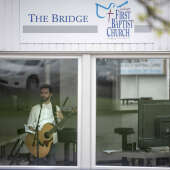Thunderstorms can bring cause to take cover
Q. Is it true that you can get electrocuted taking a shower during a thunderstorm?
A. Yes. According to the National Severe Storms Laboratory, current may travel through plumbing and damage everything in its path. While the installation of PVC pipes -- instead of metal -- has lowered the odds of being struck, water itself is an excellent conductor of electricity. So, stay out of the shower during a storm.
Since severe storms are common around this area, and lightning is second only to floods and flash floods for cause of weather-related deaths in the United States, here are some important precautions everyone should be aware of from the National Weather Association (www.nwas.org):
The most important statement for everyone to understand, memorize and to act on is: NO PLACE OUTSIDE IS SAFE from lightning NEAR THUNDERSTORMS!
Level 1: Plan your activities around the weather to avoid the lightning strike hazard. If you are going to be outside, know the weather forecast beforehand. Know the local weather patterns.
Level 2: While outside, use the "30-30 Rule" to know when to seek a safer location.
* When you see lightning, count the time until you hear thunder. If this time is 30 seconds or less, go to a safer place. If you can't see the lightning, just hearing the thunder is a good back up rule to use to take cover.
* Wait 30 minutes or more after hearing the last thunder before leaving the safer location.
Level 3: Go to a safer location when required. Don't hesitate; go to a safer place immediately! The safest place commonly available is a large fully enclosed substantially constructed building, e.g., a typical house. Once inside, stay away from any electrical conducting path from the outside, e.g., corded telephones, electrical appliances and plumbing. If you can't get to a substantial building, a vehicle with a solid metal roof and metal sides is a reasonable second choice. Avoid contact with conducting paths going outside. Convertibles and open-framed vehicles do not count as lightning shelters.
Level 4: If you can't get to a safer location, avoid the most dangerous locations and activities. Avoid higher elevations, wide-open areas, tall isolated objects, water-related activities, and open vehicles. Avoid unprotected open structures like picnic pavilions, rain shelters, and bus stops. DO NOT GO UNDER TREES TO KEEP DRY DURING THUNDERSTORMS!
Level 5: Use this only as a desperate last resort: If you are outside and far away from a safe place, proceed to the safest location. If lightning is imminent, it will often give a few seconds of warning: hair standing up, tingling skin, light metal objects vibrating, seeing corona discharge, and/or hearing a crackling or "kee-kee" sound. If you are in a group, spread out so there are several body lengths between each person. Once spread out, use the lightning crouch -- put your feet together, squat down, tuck your head, and cover your ears.
When the immediate threat of lightning has passed, continue heading to the safest place possible. Remember, this is a desperate last resort; you are much safer following the previous guidance and avoiding this high-risk situation.
Jon K. Rust is publisher of the Southeast Missourian. If you have a question, e-mail factorfiction@semissourian.com or call Speak Out (334-5111) and identify your call as a question for "Fact or fiction?"

































Respond to this story
Posting a comment requires a subscription.